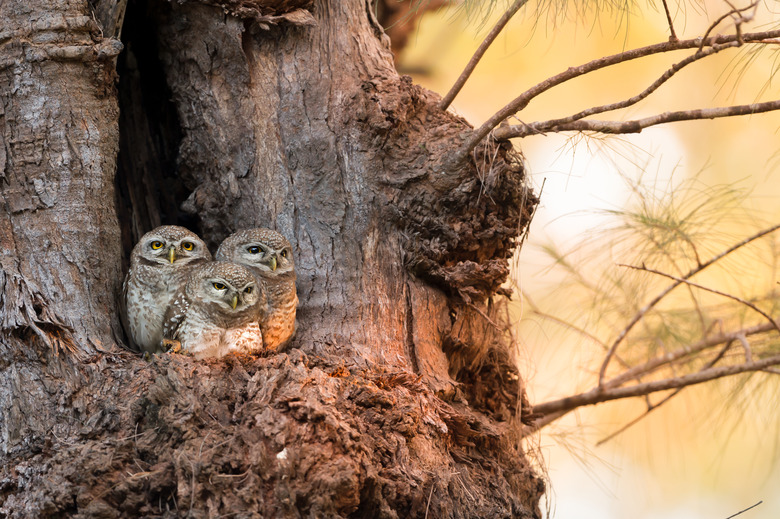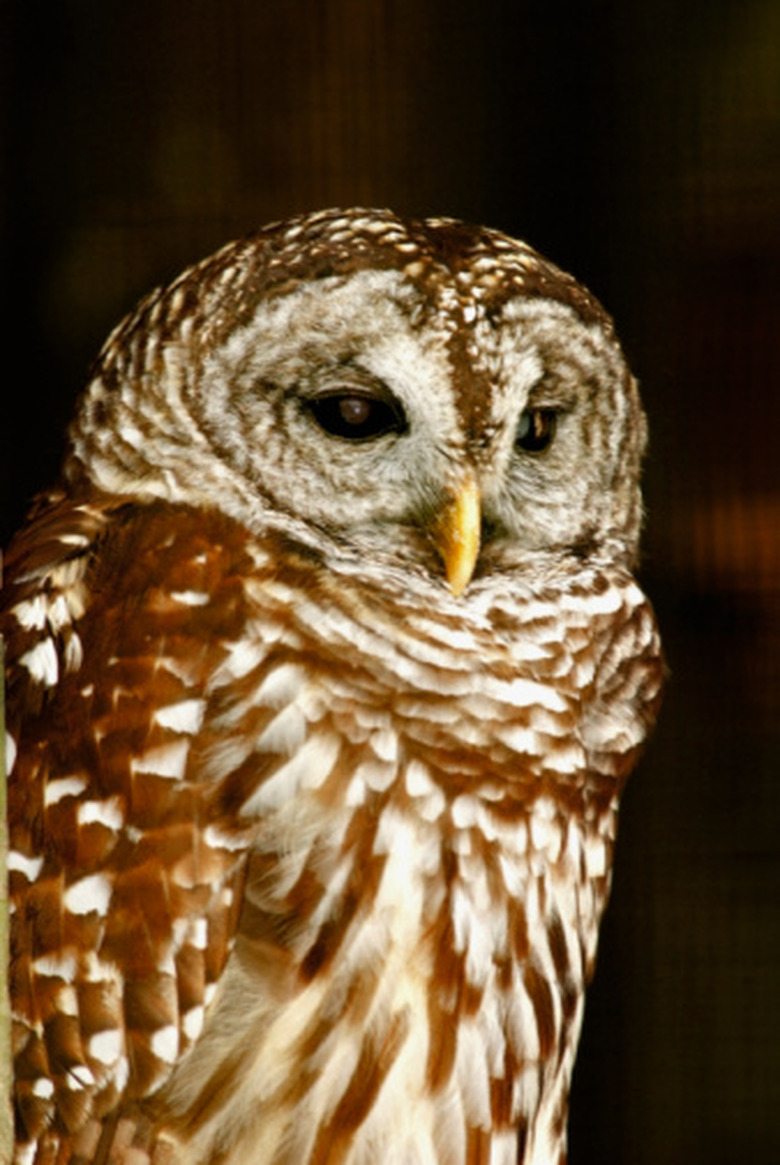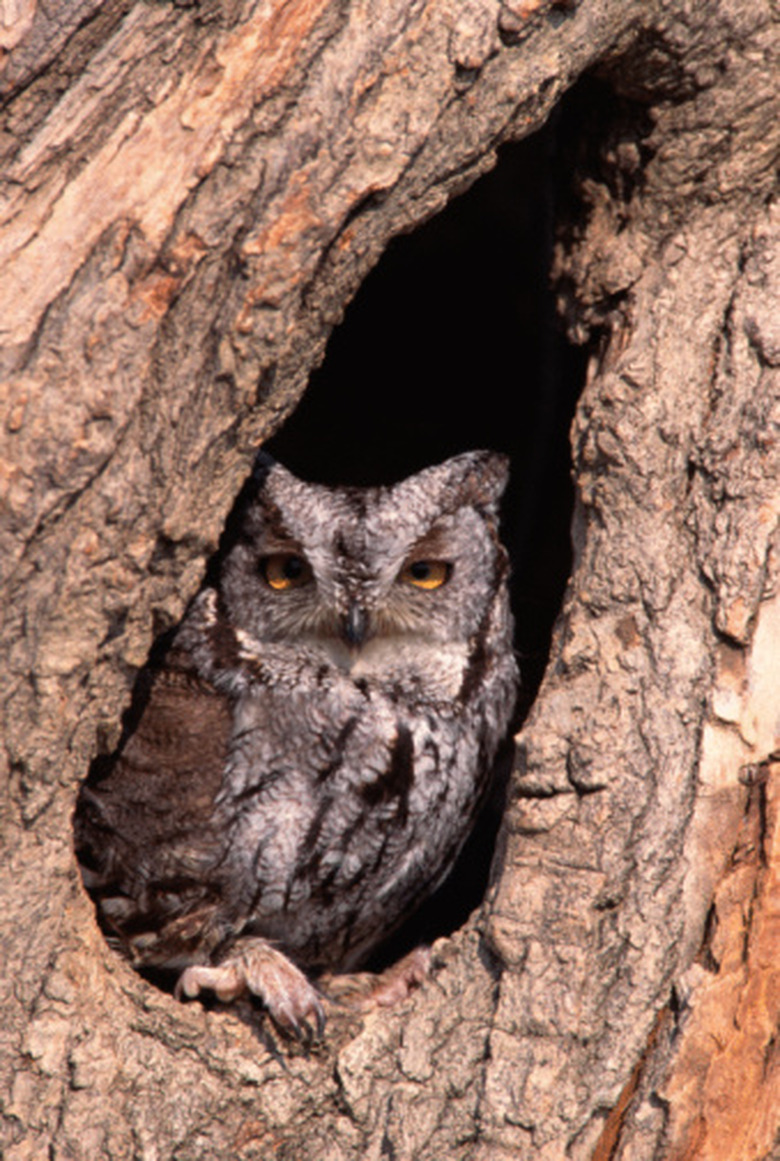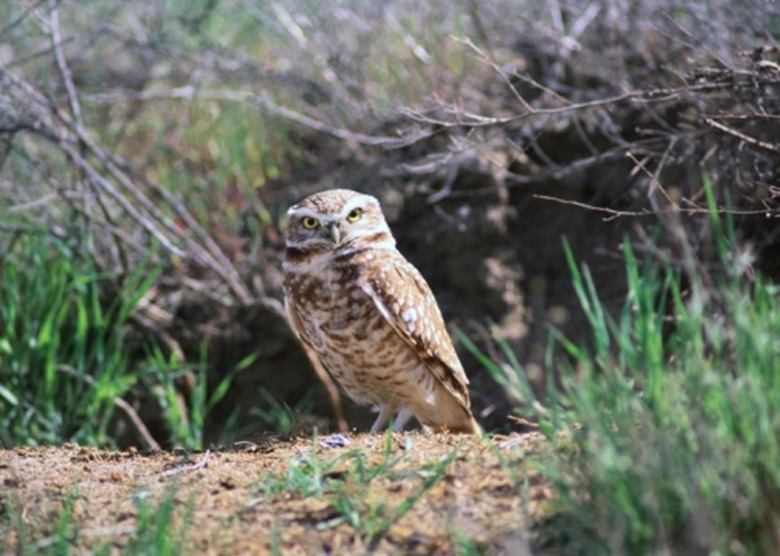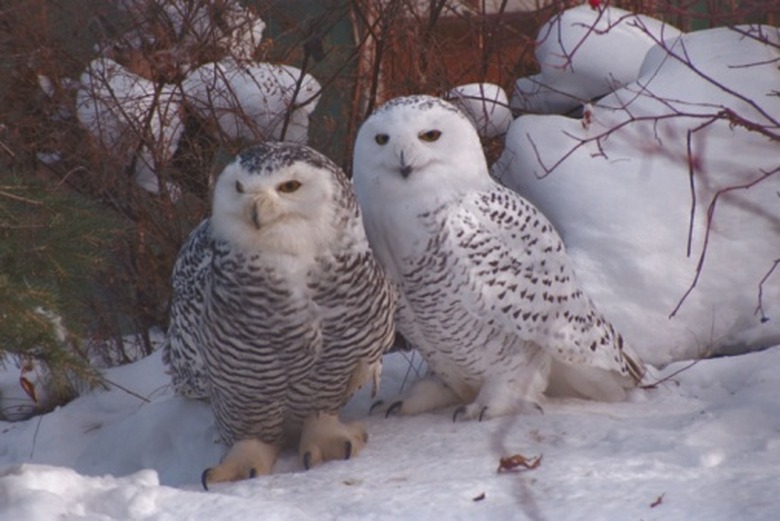Places Where Owls Live
Owls are nocturnal and solitary birds of prey with hooked bills and claws, front-facing eyes and flat faces. They live almost everywhere except for Antarctica.
Asking "where do owls live" is almost always dependent on the exact species of owl you're wondering about. Generally, however, make their nests in cavities, such as hollow trees or crevices in cliffs. Most owls eat small mammals, birds, snakes and insects, and they usually hunt at night.
Owl Facts: Classification and Description
Owl Facts: Classification and Description
All owls are members of the order Strigiformes. This order includes about 200 species of almost solely nocturnal birds of prey.
This order is also defined by the following characteristics:
- Mostly solitary animals
- Binocular vision
- Feather adaptations for aerodynamics and silent flight
- Large heads
- "Stand" upright
Typically this order is divided into two distinct families of owls. The owl species in the family Strigidae are known as "typical owls" while the owl species in the family Tytonidae are known as "barn owls."
Barred Owls
Barred Owls
Barred owls are common in the United States and make their home in woodlands with sparse undergrowth, wooded river bottoms and wooded swamps. Like most owls, they prefer to live in cavities but might also live in a simple nest box with a large opening attached to a tree. They rarely bring extra nesting material into a cavity or nest box.
Barred owls grow to 20 to 24 inches and have a call that sounds like "Who cooks for you" repeated three or four times. They tend to hunt during the day.
Their coloration of brown and white patterns allows them to easily blend into the trees and mostly temperate deciduous forests that they call home.
The Great Horned Owl
The Great Horned Owl
Great horned owls like to take over abandoned nests of crows, great blue herons and hawks but, like other owls, sometimes make nests in cavities. This owl grows to 20 to 25 inches and prefers to live in forests, woodlots, deserts or residential areas.
Their grey-brown coloration allows them to be camouflaged within each of their environments including swamps, evergreen forests and deciduous forests. Their coloration will also depend on their geographic range.
For example, great horned owls native to the pacific northwest have a darker grey sooty coloration that matches their environment. Those closer to arctic regions in Canada, on the other hand, have much more white and light grey in their coloration.
The Eastern Screech Owl
The Eastern Screech Owl
The eastern screech owl grows only to about 9 inches, and its call is a trilled sound. They prefer to take over former woodpecker nests in cavities, and they also like wooden nest boxes.
Males and females roost together and are thought to mate for life. They prefer to live in shade trees in deciduous woodlands.
The Western Screech Owl
The Western Screech Owl
The western screech owl grows to about 8 1/2 inches. It is fairly common in the western half of the United States and prefers wooded canyons, farm groves, shade trees, residential areas and cactus woodlands.
The Burrowing Owl
The Burrowing Owl
The burrowing owl prefers open spaces, such as farms, grasslands and deserts, and nests in a hole or burrow in the ground. Usually, it reuses a hole made by a prairie dog, tortoise, armadillo or skunk, but sometimes it digs its own.
Burrowing owls live in the western United States in summer and Central and South America year around. They grow to about 10 inches.
The Snowy Owl
The Snowy Owl
The snowy owl lives in the North American Arctic tundra year around, but it finds its way farther south into the United States in winter to hunt, if prey is scarce. This white owl is the heaviest owl of North America and grows to 20 to 27 inches.
It makes its home between the tree line and polar seas of northernmost Canada. It makes its nest on elevated ground.
Cite This Article
MLA
Montet, Margaret. "Places Where Owls Live" sciencing.com, https://www.sciencing.com/places-owls-live-8487136/. 22 November 2019.
APA
Montet, Margaret. (2019, November 22). Places Where Owls Live. sciencing.com. Retrieved from https://www.sciencing.com/places-owls-live-8487136/
Chicago
Montet, Margaret. Places Where Owls Live last modified August 30, 2022. https://www.sciencing.com/places-owls-live-8487136/
